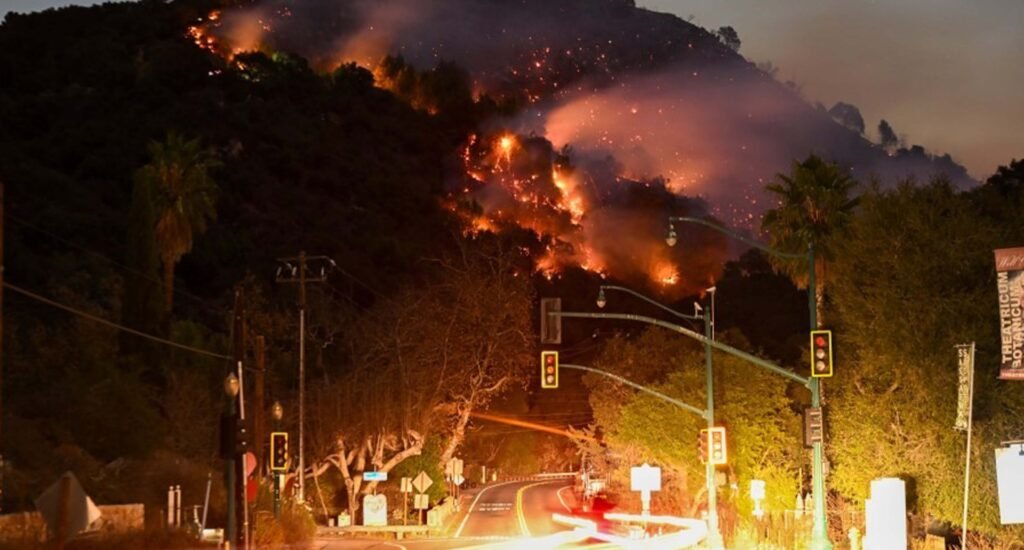Los Angeles Wildfire Economic Loss Estimates Top $150 Billion
- Sara Habib
- January 13, 2025
- 5:14 pm
- 35
- Current Affairs

California wildfire damages continue to rise, leaving a trail of economic, environmental, and human devastation. Estimated at over $150 billion, the latest wildfire—one of the most destructive in recent memory—demands immediate action and attention. This blog explores the extensive toll of these fires, their implications, and the path to recovery.
The Unprecedented Scale of Destruction
Wildfires in California have reached catastrophic levels. Beginning in Los Angeles on Tuesday, the blaze has consumed thousands of acres, reducing hundreds of buildings to rubble and displacing countless families. The high winds and dry conditions have fueled the fire's rapid spread, making containment efforts a monumental challenge.
Key Impacts at a Glance
● Economic Losses: $150 billion in damages, according to AccuWeather.
● Human Displacement: Hundreds of families evacuated.
● Environmental Damage: Thousands of acres of forest and wildlife habitats destroyed.
● Health Risks: Increased air pollution due to smoke and ash.
Economic Fallout: Counting the Cost
California wildfire damages are estimated to range between $135 billion and $150 billion. The destruction includes:
● Infrastructure Damage: Roads, bridges, and public utilities severely affected.
● Business Losses: Local economies disrupted due to destroyed businesses.
● Rebuilding Costs: A lengthy and resource-intensive recovery process.
For a comprehensive understanding of the economic impact, visit AccuWeather’s report on wildfire costs.
Environmental and Health Consequences
The wildfires have caused irreversible damage to the environment:
● Forest and Wildlife Loss: Thousands of acres of natural habitats obliterated.
● Air Quality Issues: Thick smoke has increased pollution levels, posing health risks to residents.
Health professionals recommend using N95 masks to minimize exposure to harmful air pollutants. Learn more about air quality protection at AirNow.gov.
Firefighting and Containment Efforts
Despite immense challenges, firefighters are tirelessly battling the blaze. However, strong winds and dry conditions hinder progress. Additional resources and manpower have been deployed, but the unpredictable nature of wildfires complicates containment strategies.
For updates on evacuation zones and safety measures, visit California Department of Forestry and Fire Protection.
Safety Measures and Evacuations
Local authorities emphasize the importance of prompt evacuation in high-risk areas. Emergency shelters are operational to support displaced families, offering basic necessities and emotional support. Follow real-time evacuation alerts via Ready.gov.
Addressing the Root Causes
Experts link the increasing frequency and severity of wildfires to climate change. Proactive measures are essential to mitigate future risks, including:
● Improved forest management practices.
● Stricter building codes in fire-prone areas.
● Enhanced emergency response systems.
Community Support and Recovery Efforts
Recovering from California wildfire damages will require a collective effort. Government agencies, non-profits, and volunteers are working to:
● Provide immediate relief to victims.
● Offer long-term recovery assistance.
● Raise funds through donations and community drives.
If you wish to contribute, visit Red Cross Disaster Relief to make a donation.
The Road Ahead
California wildfires are a stark reminder of the urgent need for climate action and robust disaster preparedness. Addressing the underlying causes and strengthening community resilience are critical for minimizing future damages.
Together, we can combat this growing threat by implementing effective policies, supporting recovery efforts, and fostering community awareness. For now, the focus remains on controlling the fire, aiding victims, and planning for a resilient future.
Conclusion
California wildfire damages illustrate the devastating impact of climate change and the importance of preparedness. By working collectively, we can mitigate future risks and support affected communities in their journey toward recovery.



